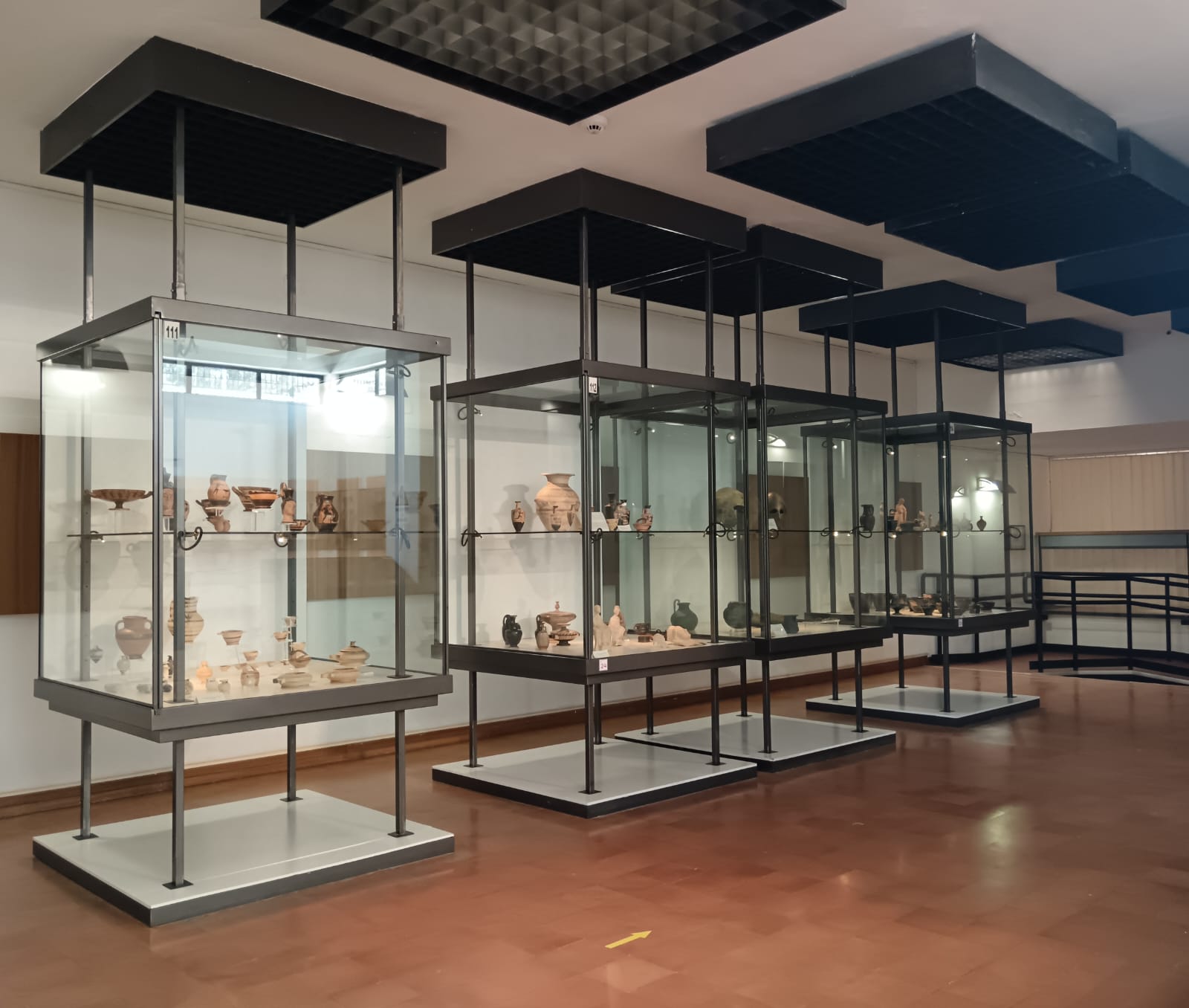The place
The four display cases in the room are dedicated to the territory of Enna and, in particular, to Montagna di Marzo. They contain artifacts of considerable artistic and archaeological importance, attesting above all to the widespread presence of the Greeks in the territory, which, from the coasts, following the course of the rivers, penetrated deep into the interior of the island.
Located northwest of Piazza Armerina and along the course of the Olivo stream, the center stands on a plateau and has been identified with the city of Erbesso. An orthogonal layout organizes the living space, within which an acropolis with a Hellenistic sanctuary can be distinguished. A vast necropolis surrounds the entire plateau, although most of the tombs are concentrated on the eastern side, along which many chamber tombs have been found, dug into the tuff rock, which have yielded abundant ceramic and metal material. One of the richest tombs is undoubtedly number 31, an underground chamber tomb, inside which 133 artifacts were found, including 96 ceramic items (among which a group of vases, or fragments thereof, with inscriptions stands out), while the rest are bronze vases and various objects. Inside the burial chamber, two sarcophagi were found containing the remains of men: two warriors, as suggested by the weapons placed next to them, together with those laid outside the sarcophagi. Dating back to the first half of the 5th century BC, the tomb also contained the remains of food, probably related to the funeral banquet, while the use of wine is suggested by the presence of bronze vases used in the dining rooms and wine amphorae for transport. Particularly interesting, together with the strigils, are the bronze weapons: two helmets, one of the Chalcidian type and one of the Corinthian type with embossed cheek guards decorated with profiles of Silenus, as well as two anatomical greaves. The exhibition also features several polychrome glass paste jars, trilobed oinochoai with a plastic body in the shape of a female head and, above all, a vase with an inscription, which undoubtedly comes from the Montagna di Marzo site, despite having arrived at the museum from a private collection. A decoration painted in parallel horizontal bands of different sizes, with a wavy line in the widest area at the height of the handles, extends over the entire surface of the vase; this is embellished by an inscription on two lines, one on the shoulder and the other, painted on the upside-down vase, in the area below the handles. The letters follow a right-handed ductus and, at the beginning and end of the two sentences, become considerably smaller, even overlapping in the lower one: the painter clearly had difficulty calculating the space needed for their extension.
The letters used are Greek, but the language is of Italic origin; the interpretation of the inscription is still uncertain, although there are hypotheses that it may refer to the convivial environment.



